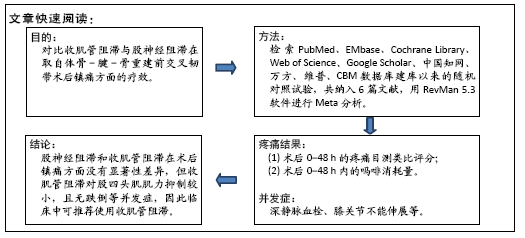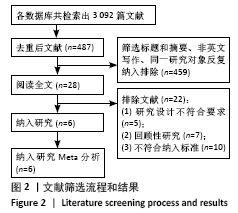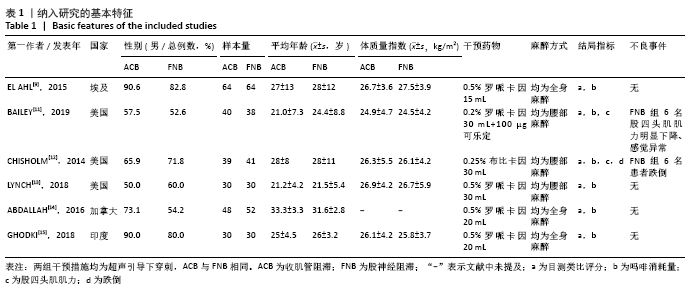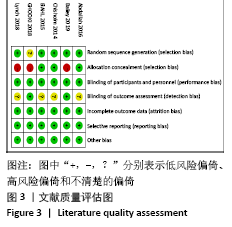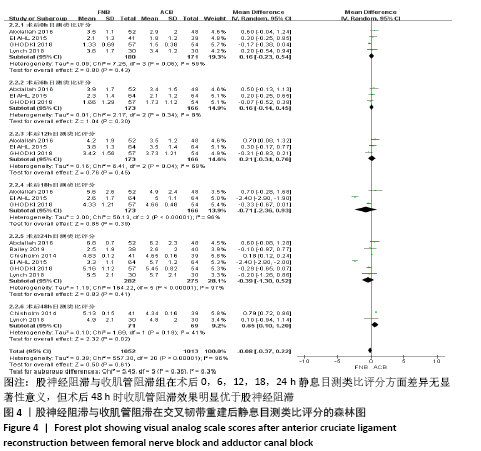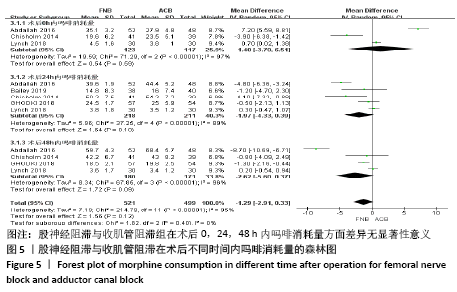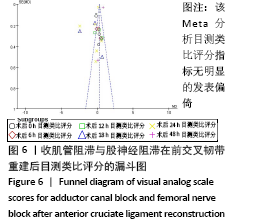[1] HALL-BURTON D, HUDSON M, GRUDZIAK J, et al. Regional anesthesia is cost-effective in preventing unanticipated hospital admission in pediatric patients having anterior cruciate ligament reconstruction. Reg Anesth Pain Med. 2016;41(4):527-531.
[2] WILLIAMS B, KENTOR M, VOGT M, et al. Economics of nerve block pain management after anterior cruciate ligament reconstruction: potential hospital cost savings via associated postanesthesia care unit bypass and same-day discharge. Anesthesiology. 2004;100(3):697-706.
[3] LEATHERS M, MERZ A, WONG J, et al. Trends and demographics in anterior cruciate ligament reconstruction in the United States. J Knee Surg. 2015;28(5):390-394.
[4] SWANK K, DIBARTOLA A, EVERGART J, et al. The effect of femoral nerve block on quadriceps strength in anterior cruciate ligament reconstruction: a systematic review. Arthroscopy. 2017;33(5):1082-1091.e1081.
[5] LUO T, ASHRAF A, DAHM D, et al. Femoral nerve block is associated with persistent strength deficits at 6 months after anterior cruciate ligament reconstruction in pediatric and adolescent patients. Am J Sports Med. 2015;43(2):331-336.
[6] BURCKETT-ST LAURANT D, PENG P, GIRON ARANGO L, et al. The nerves of the adductor canal and the innervation of the knee: an anatomic study. Reg Anesth Pain Med. 2016; 41(3):321-327.
[7] VORA M, NICHOLAS T, KASSEL C, et al. Adductor canal block for knee surgical procedures: review article. J Clin Anesth. 2016;35:295-303.
[8] ZHAO X, JIANG N, YUAN F, et al. The comparison of adductor canal block with femoral nerve block following total knee arthroplasty: a systematic review with meta-analysis. J Anesth. 2016;30(5): 745-754.
[9] El AHL MS. Femoral nerve block versus adductor canal block for postoperative pain control after anterior cruciate ligament reconstruction: a randomized controlled double blind study. Saudi J Anaesth. 2015;9(3):279-282.
[10] EDWARDS MD, BETHEA JP, HUNNICUTT JL, et al. Effect of adductor canal block versus femoral nerve block on quadriceps strength, function, and postoperative pain after anterior cruciate ligament reconstruction: a systematic review of level 1 studies. Am J Sports Med. 2020;48(9): 2305-2313.
[11] BAILEY L, GRIFFIN J, ELLIOTT M, et al. Adductor canal nerve versus femoral nerve blockade for pain control and quadriceps function following anterior cruciate ligament reconstruction with patellar tendon autograft: a prospective randomized trial. Arthroscopy. 2019;35(3):921-929.
[12] CHISHOLM MF, BANG H, MAALOUF DB, et al. Postoperative analgesia with saphenous block appears equivalent to femoral nerve block in ACL reconstruction. HSS J. 2014;10(3):245-251.
[13] LYNCH JR, OKOROHA KR, LIZZIO V, et al. Adductor canal block versus femoral nerve block for pain control after anterior cruciate ligament reconstruction: a prospective randomized trial. Am J Sports Med. 2019;47(2):355-363.
[14] ABDALLAH FW, WHELAN DB, CHAN VW, et al. Adductor canal block provides noninferior analgesia and superior quadriceps strength compared with femoral nerve block in anterior cruciate ligament reconstruction. Anesthesiology. 2016;124(5):1053-1064.
[15] GHODKI PS, SHALU PS, SARDESAI SP. Ultrasound-guided adductor canal block versus femoral nerve block for arthroscopic anterior cruciate ligament repair under general anesthesia. J Anaesthesiol Clin Pharmacol. 2018;34(2):242-246.
[16] BOON JM, VAN WYK MJ, JORDAN D. A safe area and angle for harvesting autogenous tendons for anterior cruciate ligament reconstruction. Surg Radiol Anat. 2004;26:167-171.
[17] XIE X, LIU X, CHEN Z, et al. A meta-analysis of bone-patellar tendon-bone autograft versus four-strand hamstring tendon autograft for anterior cruciate ligament reconstruction. Knee. 2015;22:100-110.
[18] BENDTSEN TF, MORIGGL B, CHAN V, et al. Redefining the adductor canal block. Reg Anesth Pain Med. 2014;39:442-443.
[19] BENDTSEN TF, MORIGGL B, CHAN V, et al. Defining adductor canal block. Reg Anesth Pain Med. 2014;39:253-254.
[20] JAGER P, LUND J, JENSTRUP MT, et al. Reply to Dr Bendtsen. Reg Anesth Pain Med. 2014;39: 254-255.
[21] BENDTSEN TF, MORIGGL B, CHAN V, et al. Basic topography of the saphenous nerve in the femoral triangle and the adductor canal. Reg Anesth Pain Med. 2015;40:391-392.
[22] TUBBS RS, LOUKAS M, SHOJA MM, et al. Anatomy and potential clinical significance of the vastoadductor membrane. Surg Radiol Anat. 2007;29:569-573.
[23] JAGER P, ZARIC D, FOMSGAARD JS, et al. Adductor canal block versus femoral nerve block for analgesia after total knee arthroplasty: a randomized, double-blind study. Reg Anesth Pain Med. 2013;38:526-532.
[24] HEAD SJ, LEUNG RC, HACKMAN GP, et al. Ultrasound-guided saphenous nerve block–within versus distal to the adductor canal: a proof-of-principle randomized trial. Can J Anaesth. 2015;62:37-44.
[25] MARIAN AA, RANGANATH Y, BAYMAN EO, et al. A comparison of 2 ultrasound-guided approaches to the saphenous nerve block: adductor canal versus distal transsartorial: a prospective, randomized, blinded, noninferiority trial. Reg Anesth Pain Med. 2015;40:623-630.
[26] MARIANO ER, KIM TE, WANGER MJ, et al. A randomized comparison of proximal and distal ultrasound-guided adductor canal catheter insertion sites for knee arthroplasty. J Ultrasound Med. 2014;33:1653-1662.
[27] WEI J, YANG HB, QIN JB, et al. Single-dose intra-articular bupivacaine after knee arthroscopic surgery: a meta-analysis of randomized placebo-controlled studies. Knee Surg Sports T raumatol Arthrosc. 2014;22:1517-1528.
[28] BUSHNELL BD, SAKRYD G, NOONAN TJ. Hamstring donor-site block: evaluation of pain control after anterior cruciate ligament reconstruction. Arthroscopy. 2010;26:894-900.
[29] FAUNø P, LUND B, CHRISTIANSEN SE, et al. Analgesic effect of hamstring block after anterior cruciate ligament reconstruction compared with placebo: a prospective randomized trial. Arthroscopy. 2015;31:63-68.
[30] WILLIAMS BA, BOTTEGAL MT, KENTOR ML, et al. Rebound pain scores as a function of femoral nerve block duration after anterior cruciate ligament reconstruction: retrospective analysis of a prospective, randomized clinical trial. Reg Anesth Pain Med. 2007;32:186-192. |
